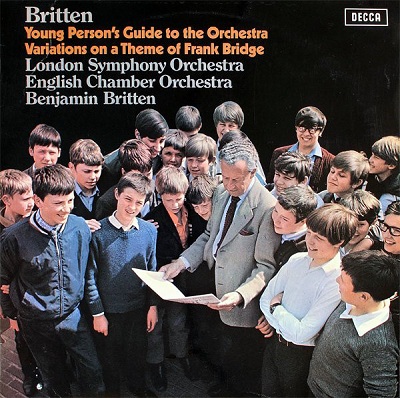10. Benjamin Britten/Sergei ProkofievThe Young Person’s Guide to the Orchestra/Peter and the Wolf

I think it was on this cheap imprint called Music for Pleasure in the UK. [The Britten piece] probably exists in two versions: one with a narrator and one without a narrator. This is classical music, right, so this was allowed in my household. Thanks, Dad. What it is for me is I’m decoding the noise that is music into separate elements as I learn more about music and as I go deeper into it and enjoy it more. Obviously I can vaguely remember a time when I was seven or eight when I just heard the noise and the vocal on a song and I had no idea what the noise was. The same with the orchestra. So in The Young Person’s Guide, it’s variations on a theme that someone else wrote, Henry Purcell, maybe. They go through and they identify the different instruments. ‘And here, you hear the theme played by the flutes.’ And the flutes play.
Similarly, in Peter and the Wolf, it also has a narrator. It’s a story told in musical form, and different instruments represent [characters] – one represents Peter, one represents the wolf, one represents the duck, one represents the bird that’s in the tree. And so for the emerging musical mind, from my background where I was comfortable with classical music because it’s what I was steeped in, this was a wonderful lesson, really, in how all the different elements fit together. Peter and the Wolf is just like a little fairytale, I think. It’s very deeply clever, actually, both composers, to brainwash the young mind.


